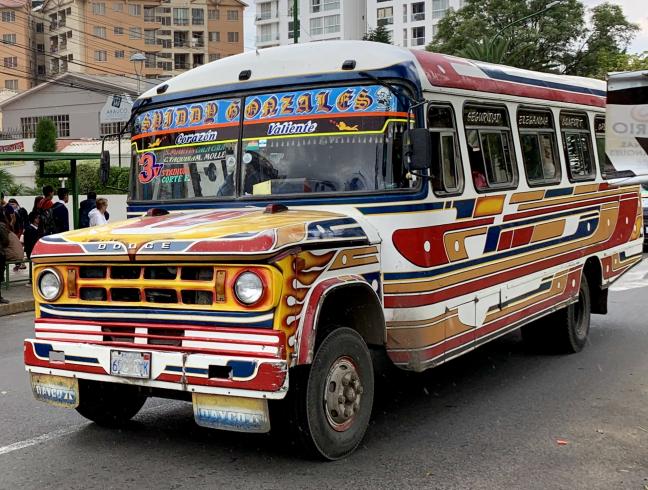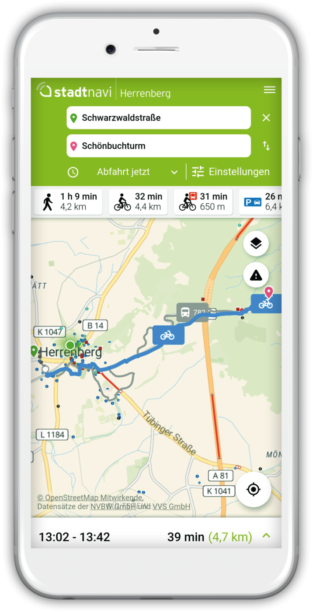
Introduction
Mobility services and open technologies are closely related, as the rise of satellite mapping and its consequences for governments and citizens have changed the way we deal with transport. More recently, the open data movement has brought together large and small players from the public and private sectors in putting forward strategies of transport data aggregation while adapting them to the local context.
European municipalities have struggled with the development of complex mobility projects, at times facing constraints in terms of capacity, funds, and technical knowledge to carry them out. At the same time, the problem goes beyond the EU as mobility solutions are a challenge faced by governments all around the world. Here, open technologies and increased use of open data are often seen as a promise to respond to this global issue by fostering a bottom-up approach to respond to local needs while bolstering international cooperation and development.
In this case study, the OSOR Team examines the uniquely international and community-based development model that was created by the Trufi association, and how it used open source to connect local European administrations with international counterparts in the development of intermodal mobility solutions.
Trufi’s backstory
With 10 ongoing projects currently, Trufi has developed an international network of open source users and maintainers, mainly organised around their use of OpenStreetMap.

Trufi’s origins trace back to 2018 when Christoph Hanser, a German expatriate who was living in Cochabamba, Bolivia, wanted to find a way to navigate the city's public transport system. The city’s minibuses, the Trufis, take passengers to their destination via well-known but undocumented routes. There are no stops because passengers can board and disembark from the vehicle anywhere as long as there is room in the minibus. While this system is effective and convenient for locals who know their specific routes, no overall mapping was available and no bigger tech companies were able to comprehensively map this system.
Christoph conceived the idea of developing an app to document the bus routes run by decentralised bus companies. While conducting his initial research, he discovered Samuel, a local who had a similar idea but was discouraged from pursuing it after losing his first project and its related data. When Christoph reached out to Samuel, they decided to revive the project together and created the Trufi app.
For mapping data, they interfaced it with OpenStreetMap. Additionally, they used GTFS, an open data standard for public transport information. However, Cochabamba did not have a GTFS file which would share transport data managed by the administration, so they decided to crowdsource the data and to release it publicly. Finally, other German volunteers created the front and back end of the Trufi app to visualise and compile the data created by the Trufi project.
After founding the ‘Trufi Association NGO’ in 2019 in Hamburg, Germany, and releasing the app for Cochabamba, Trufi published the app as open source to promote its spread, which encouraged cities and communities all over the world to deploy the app themselves. They chose two open source copyleft licences, GPLv3 and AGPLv3, so that improvements and modified versions made by others would also be open source.
International angle to public sector solutions development
The story of Trufi could have stopped there, but the association’s work goes beyond its first project. With the aim of broadening the technology's reach to benefit more people, the association facilitated the reuse of the original project in other countries and communities, thus giving what started as a local project an international reach to other public organisations.
Trotro was one of the first new projects launched and is also hosted on Trufi’s repository. It is a mobile app for public transport in Accra, Ghana. Trotro was made possible through some external funding from the French Agency for Development (AFD), which supported the local community’s collection of public transport data in Accra. From there, the Trufi team worked together with the local community to implement the Trufi core components in Trotro.

Another relevant project is BusBoy, a modified version of the app working in the city of Duitama, Columbia, and hosted in Trufi’s online repository. Made by a local teacher and their students, it is customised with its own logo, colours, and splash screen. The Trufi data tools are used to generate Duitama’s mapping data. The app has been praised by the city’s mayor for the benefits it brings to the local community aided by the collaboration of local transport operators in mapping their routes.
After this, several other projects followed similar models as they were either forked or readapted from the original code from Trufi and then supported by the original association to various degrees. Embracing the philosophy of reuse, the various use cases of solutions developed by the app also show how local funding and international volunteering networks can enable the creation of local solutions.
Overall, bridging the gap in providing public solutions to transport using collaborative approaches to develop international volunteering networks has shown interesting effects. Whether in Duitama, Tétouan, or Addis Ababa, the processes were very similar. As individuals or communities found out about the Trufi project, they contacted the organisation and received support in developing the app. This was possible only thanks to the Trufi core being open source.
This novel approach to international development of public services in mobility can be a means for various communities to collaborate in wide-ranging contexts and showcases the effectiveness of resilient bottom-up collaboration across different regions and municipalities around the world.
An EU project showcase: Stadtnavi and its impact
While most of Trufi's projects are based outside the EU, some of its Germany-based projects have helped facilitate the future of open source solutions in the EU afterwards by enabling the growth of such initiatives.
The Stadtnavi web platform, initiated by the city of Herrenberg, Germany, aims to enhance urban air quality through sustainable mobility. It enables quick eco-friendly anonymous navigation from point A to B. Part of the "Clean Air'' model city initiative funded by the German Federal Ministry of Transport and Digital Infrastructure (BMVI) from 2018 to 2021, Herrenberg’s implementation of the Stadtnavi platform received support from BMVI.

Before collaborating with Trufi, Stadtnavi--which integrated public transport, walking, cycling, and car routing for efficient route planning--was already a working open source solution based on the Digitransit platform. Based on OpenTripPlanner (OTP), it was developed by Helsinki Region Transport (HSL), Finnish Transport Infrastructure Agency (Väylä), and the state and regions-owned IT solution and service procurement company Waltti. It operates in various countries, including Finland, Germany (Münster and Ulm), Italy (Turin), Estonia, and Romania.
Real-time availability data enhances Stadtnavi’s appeal. Alongside the web version, herrenberg.stadtnavi.de, the Trufi association secured a tender and collaborated with the team in Herrenberg to create a mobile app based on the Trufi core. There, the involvement of Trufi had two important implications. Firstly, the app developed for Herrenberg has had a remarkable impact as it enabled a wider use of the app locally. Secondly, this outcome has led to a broader adoption of web-based solutions in the region as evidenced by the app being forked in the city of Ludwigsburg.
At the same time, from Trufi’s perspective, obtaining this contract in a public tender was an important step in stabilising the association’s business model. Being awarded such a contract, Trufi’s core solution was being reused while it hired part of its volunteer team for the first time.
Through financing an open source project, which was first created on a voluntary basis, this German administration has contributed to sustaining an international effort and can hopefully help other regions address similar challenges around the world. While the role and value of voluntary work may be well understood in the open source community, this case illustrates the role a European public administration can play in the global effort towards developing open public services.
A bottom-up approach to digital public services
As international efforts on open source collaboration are ramping up, such as the UN creating initiatives to support the creation of digital public goods, the methodology employed has become central to the success of such initiatives. This case study's model exemplifies how a genuinely grassroots approach has facilitated the organic growth of the Trufi association's volunteer base while enhancing its expertise and efficacy in implementing mobility solutions internationally. As projects in one location came to an end, the volunteers of these projects helped further down the line, with volunteers from one country helping with other projects afterwards.
Alongside the usual challenges when designing such projects, the Trufi model has also shown how open source and volunteer-based approaches have helped take gender-related aspects of transport into consideration. Moreover, such a method allowed for questioning relationships with other countries as former colonial powers have had influence over the design of specific public services. This model gives back the power to local communities to create and sustain mobility solutions while supporting them, and it shows an alternative process to public service open source use and collaboration at an international scale.
Conclusion
While a bottom-up approach to the delivery of public services shows a lot of potential, it is still early days, and it is highly dependent on the success of its projects. If the right funding long-term strategies and support are planned and implemented locally, this process could in turn influence more countries and associations when developing solutions and engaging in digital development policy. Open source has been a tool to empower local communities on their own terms, for their own needs. Benefitting indirectly from funding from multiple public administrations, these communities have also supported one another in a virtuous circle.
Amidst ongoing discussions about the sovereignty of European public administrations and the necessary collaboration for public service openness, this operational style prompts a broader perspective. It demonstrates the interconnectivity of such initiatives, highlighting the interdependence of our ICT systems, which could enhance the resilience of the global community rather than representing a national vulnerability.
By adopting an international grassroots-oriented approach to developing public service solutions, Trufi offers an alternative to other models adopted by international organisations, one that directly addresses citizens' needs.

